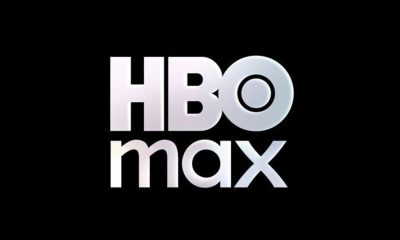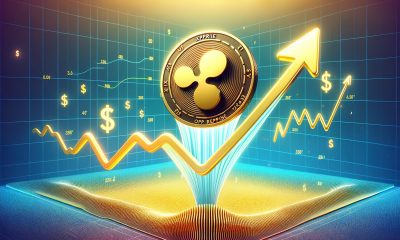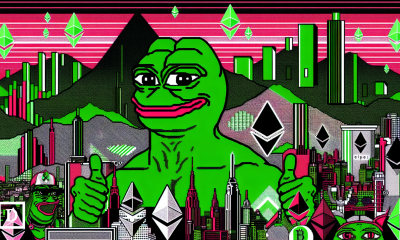

others
US futures little changed ahead of the opening bell on Monday – Crypto News
- Wall Street’s main indexes hit new all-time highs last week.
- US stock index futures trade flat on Monday.
- The US economic calendar will feature key data releases later in the week.
Nasdaq futures trade flat at 17,996.75, Dow Jones futures are down 0.1% at 39,152.00 and S&P futures are virtually unchanged at 5,100 ahead of the opening bell on Monday.
What to know before stock market opens
- Dow Jones and S&P 500 both closed at new all-time highs on Friday, gaining 1.3% and 1.6% on a weekly basis. Profit-taking caused the Nasdaq Composite to close the last trading day of the week in negative territory, but the index added 1.4% for the week.
- The Technology Sector started off the day as the best-performing major S&P 500 sector on Friday, rising nearly 1% before swinging to losses, ending the day down 0.27%. The Utilities Sector rose 0.71% to become Friday’s best-performing sector, while the Energy Sector was down 0.58% at the closing bell.
- Palo Alto Network (PANW) gained 5.3% on Friday, ending at $282.09, while Booking Holdings Inc. (BKNG) tumbled 10.15% as the biggest loser, closing at $3,505.96.
- Nvidia Corp. (NVDA) initially gained more than 3% on Friday to trade at a new record-high of $823.94 but pulled back in the back half of the trading day to finish at $788.17, up around 0.36%. Nevertheless, NVDA was up over 8% for the week, closing in positive territory for the seventh consecutive week.
- The chipmaker had reported on Wednesday that earnings per share topped $5.16 versus the $4.64 forecast, while revenue climbed to $22.10 billion compared to the expected $20.62 billion. The company also said that it forecasts the current-quarter revenue of $24 billion, plus or minus 2%. Mizuho has raised the target price for Nvidia stock to $850 from $825, HSBC lifted its target to $880 from $835 and Citigroup revised its expectation to $820 from $575.
- The US Census Bureau will publish New Home Sales data for January on Monday. Later in the American session, the US Treasury will hold 2-year and 5-year note auctions.
- On Tuesday, January Durable Goods Orders data will be featured in the economic calendar before the US Bureau of Economic Analysis releases the second estimate of the Gross Domestic Product (GDP) growth for the fourth quarter on Wednesday. Personal Consumption Expenditures (PCE) Price Index, the Federal Reserve’s (Fed) preferred gauge of inflation, figures will be scrutinized by market participants on Thursday.
- New York Fed President John Williams said on Friday that he expects the US central bank to start lowering the policy rate in the second half of the year. According to the CME FedWatch Tool, markets are pricing in a nearly 80% probability that the Fed will leave the policy rate unchanged at 5.25%-5.5% in the next two meetings.
- Workday, Inc. (WDAY) and ONEOK Inc. (OKE) are among the top companies that will report quarterly earnings after the closing bell on Monday.
Dow Jones FAQs
The Dow Jones Industrial Average, one of the oldest stock market indices in the world, is compiled of the 30 most traded stocks in the US. The index is price-weighted rather than weighted by capitalization. It is calculated by summing the prices of the constituent stocks and dividing them by a factor, currently 0.152. The index was founded by Charles Dow, who also founded the Wall Street Journal. In later years it has been criticized for not being broadly representative enough because it only tracks 30 conglomerates, unlike broader indices such as the S&P 500.
Many different factors drive the Dow Jones Industrial Average (DJIA). The aggregate performance of the component companies revealed in quarterly company earnings reports is the main one. US and global macroeconomic data also contributes as it impacts on investor sentiment. The level of interest rates, set by the Federal Reserve (Fed), also influences the DJIA as it affects the cost of credit, on which many corporations are heavily reliant. Therefore, inflation can be a major driver as well as other metrics which impact the Fed decisions.
Dow Theory is a method for identifying the primary trend of the stock market developed by Charles Dow. A key step is to compare the direction of the Dow Jones Industrial Average (DJIA) and the Dow Jones Transportation Average (DJTA) and only follow trends where both are moving in the same direction. Volume is a confirmatory criteria. The theory uses elements of peak and trough analysis. Dow’s theory posits three trend phases: accumulation, when smart money starts buying or selling; public participation, when the wider public joins in; and distribution, when the smart money exits.
There are a number of ways to trade the DJIA. One is to use ETFs which allow investors to trade the DJIA as a single security, rather than having to buy shares in all 30 constituent companies. A leading example is the SPDR Dow Jones Industrial Average ETF (DIA). DJIA futures contracts enable traders to speculate on the future value of the index and Options provide the right, but not the obligation, to buy or sell the index at a predetermined price in the future. Mutual funds enable investors to buy a share of a diversified portfolio of DJIA stocks thus providing exposure to the overall index.
-
Business1 week ago
Solana Price Eyes $240 Recovery as Gemini Launches SOL-Reward Credit Card – Crypto News
-
Technology1 week ago
Blockchain for Good Alliance and UNDP AltFinLab Launch Blockchain Impact Forum – Crypto News
-
Technology1 week ago
Blockchain for Good Alliance and UNDP AltFinLab Launch Blockchain Impact Forum – Crypto News
-

 Blockchain1 week ago
Blockchain1 week agoTokenized Deposits for Payments, Treasury – Crypto News
-

 Technology1 week ago
Technology1 week agoLayerZero outlook: ZRO price on the edge ahead of $43M token unlock – Crypto News
-

 Blockchain1 week ago
Blockchain1 week agoBitcoin Weekly RSI Points To More Upside, But Can the Bulls Defend $107,000? – Crypto News
-

 Metaverse1 week ago
Metaverse1 week agoTech layoffs: From Meta, Amazon to Google — these IT majors have cut AI related jobs – Crypto News
-

 Technology1 week ago
Technology1 week agoEthereum’s Vitalik Buterin applauds Polygon for pioneering ZK technology – Crypto News
-

 Blockchain1 week ago
Blockchain1 week agoXRP Whales Flood Binance With Massive Deposits – Selling Pressure Mounts – Crypto News
-

 Technology1 week ago
Technology1 week agoThinking of cancelling HBO Max? Subscription prices just went up – Here’s what you need to know – Crypto News
-
Technology1 week ago
Fed’s Payments Conference: Waller Floats ‘Payment Account’ Framework to Support Crypto Innovation – Crypto News
-
Technology1 week ago
ProShares Files for Index Crypto ETF Tracking Bitcoin, Ethereum, XRP, and Solana – Crypto News
-
Business1 week ago
XRP Price Classical Pattern Points to a Rebound as XRPR ETF Hits $100M Milestone – Crypto News
-
Technology1 week ago
$1.68 Trillion T. Rowe Price Files for First Active Crypto ETF Holding BTC, ETH, SOL, and XRP – Crypto News
-

 Metaverse1 week ago
Metaverse1 week agoBezos fund believes AI can save the planet. Nvidia, Google are all-in. – Crypto News
-

 Cryptocurrency1 week ago
Cryptocurrency1 week agoCrypto update: Bitcoin and Ethereum are stable as market’s focus shifts to US inflation data – Crypto News
-

 Cryptocurrency1 week ago
Cryptocurrency1 week agoExclusive: YZi Labs leads $25M round for Sign – Crypto News
-

 Technology1 week ago
Technology1 week agoOnePlus 15R full specifications leaked ahead of launch: here’s what to expect – Crypto News
-

 Cryptocurrency1 week ago
Cryptocurrency1 week agoStreamer Sam Pepper Banned From Pump.fun, Kick After Injuring Girl With Firework Stunt – Crypto News
-
Business1 week ago
Chainlink Price Eyes $27 Rebound as Whales Accumulate 54M LINK – Crypto News
-

 De-fi1 week ago
De-fi1 week agoKDA Plummets as Kadena Organization Shuts Down Operations – Crypto News
-
others1 week ago
Japan Adjusted Merchandise Trade Balance down to ¥-314.3B in September from previous ¥-150.1B – Crypto News
-

 Technology1 week ago
Technology1 week agoChatGPT down: Thousands of users unable to access AI chatbot, OpenAI says it is working on a fix – Crypto News
-
Cryptocurrency1 week ago
Robinhood Lists HYPE As Hyperliquid Flips Aster, Lighter In Perp DEX Volume – Crypto News
-
Cryptocurrency7 days ago
XRP News: Ripple Unveils ‘Ripple Prime’ After Closing $1.25B Hidden Road Deal – Crypto News
-

 Cryptocurrency6 days ago
Cryptocurrency6 days agoTrump plans to pick Michael Selig to lead CFTC: Report – Crypto News
-
Business6 days ago
White House Crypto Czar Backs Michael Selig as ‘Excellent Choice’ To Lead CFTC – Crypto News
-

 Blockchain5 days ago
Blockchain5 days agoBinance Stablecoin Outflow On A Steady Rise — What This Means For The Market – Crypto News
-
others5 days ago
JPY soft and underperforming G10 in quiet trade – Scotiabank – Crypto News
-

 Cryptocurrency4 days ago
Cryptocurrency4 days agoUSDJPY Forecast: The Dollar’s Winning Streak Why New Highs Could Be At Hand – Crypto News
-
Business1 week ago
Crypto Czar David Sacks to Meet Senate Republicans In Bid To Advance Market Structure Bill – Crypto News
-
others1 week ago
Veteran Trader Peter Brandt Says “MSTR Could Go Underwater” If Bitcoin Repeats 1977 Soybean Crash – Crypto News
-

 Blockchain1 week ago
Blockchain1 week agoHere’s Why The Shiba Inu Price Could Bottom And Rise Another 40% – Crypto News
-

 Technology1 week ago
Technology1 week agoSundar Pichai hails ‘verifiable’ quantum computing breakthrough as Google’s Willow surpasses ability of supercomputers – Crypto News
-
Business1 week ago
Breaking: Trump To Meet China’s President On October 30, Bitcoin Bounces – Crypto News
-

 Blockchain6 days ago
Blockchain6 days agoAfrica Countries Pass Crypto Laws to Attract Industry – Crypto News
-

 Blockchain6 days ago
Blockchain6 days agoISM Data Hints Bitcoin Cycle Could Last Longer Than Usual – Crypto News
-

 Blockchain5 days ago
Blockchain5 days agoEthereum Rebounds From Bull Market Support: Can It Conquer The ‘Golden Pocket’ Next? – Crypto News
-
others5 days ago
Platinum price recovers from setback – Commerzbank – Crypto News
-

 De-fi5 days ago
De-fi5 days agoNearly Half of US Retail Crypto Holders Haven’t Earned Yield: MoreMarkets – Crypto News
-

 Technology4 days ago
Technology4 days agoSurvival instinct? New study says some leading AI models won’t let themselves be shut down – Crypto News
-

 Cryptocurrency4 days ago
Cryptocurrency4 days agoWestern Union eyes stablecoin rails in pursuit of a ‘super app’ vision – Crypto News
-

 Blockchain4 days ago
Blockchain4 days agoXRP Price Gains Traction — Buyers Pile In Ahead Of Key Technical Breakout – Crypto News
-

 Blockchain1 week ago
Blockchain1 week ago$11B Bitcoin Whale Shorts Bitcoin for $235M, Nets $200M In Market Crash – Crypto News
-

 Cryptocurrency1 week ago
Cryptocurrency1 week agoRolls Royce Stock: Is A Reversal In the Works? – Crypto News
-
others1 week ago
Pi Network Price Wedge Signals a Rebound as Key Upgrades Raise Utility Hopes – Crypto News
-
Business1 week ago
Is This Final Bitcoin Price Correction Before US Shutdown Ends, Fed Rate Cuts? – Crypto News
-

 Cryptocurrency1 week ago
Cryptocurrency1 week agoChainOpera AI soars 25% – But is COAI’s rally too good to last? – Crypto News
-

 De-fi1 week ago
De-fi1 week agoEthereum Foundation Announces Gas Limit Cap for Upcoming Fusaka Upgrade – Crypto News
-

 Technology1 week ago
Technology1 week agoAI bubble isnt near a peak. Its only at ‘base camp’: Jen – Crypto News










